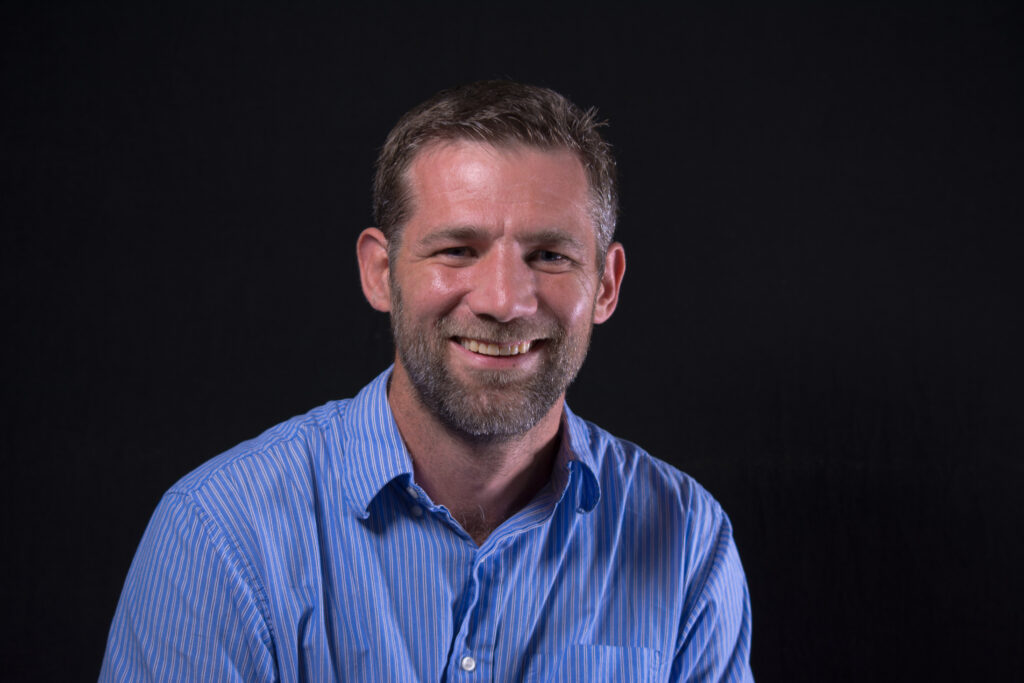The helicopter that arrived on the Red Planet on Feb. 18 as part of the Mars 2020/Perseverance mission is not the only rotorcraft NASA is sending into space.
A team of scientists, including a University of Central Florida researcher, is working to help NASA design a rotorcraft to explore Saturn’s moon, Titan. The mission and lander are called Dragonfly and are planned to launch in 2027 and reach Titan by the mid-2030s.
Michael Kinzel, an assistant professor in UCF’s Department of Mechanical and Aerospace Engineering, is working with NASA as part of the Dragonfly mission. The Johns Hopkins Applied Physics Laboratory is managing the mission for NASA and will build and operate the rotorcraft-lander. Kinzel’s team is supporting the aerodynamic design of the rotorcraft’s fuselage.
Mission to Titan
With low gravity and an atmosphere that’s thicker than Earth’s, Titan is better suited to a flying vehicle than a wheeled surface rover like those that have been used to explore Mars.
Kinzel’s group is using advanced computer simulations of the gas flow Dragonfly will experience as it flies on Titan, which will help inform how the vehicle is designed. The simulations are useful for ensuring the flight distance from one landing site to the next is maximized, as well as to understand flight scenarios that will be encountered on Titan.
“These computer models are high-fidelity simulations that are between design and experimental testing,” Kinzel says. “Our research is important because it helps the team understand Dragonfly flight in the context of real Titan conditions, which is hard to test experimentally. It reduces costs and increases the likelihood of success.”
Kinzel is an expert in aerodynamics and computational modeling of fluid flows, and has a background in supporting designs for helicopters, submarines and torpedoes for defense research.

It Takes Team Work
The mission’s principal investigator is Elizabeth Turtle, a research scientist at the Johns Hopkins APL.
As principal investigator, she is responsible for making sure that the Dragonfly mission achieves its science goals — exploring Titan to understand its environment and the organic chemistry that has occurred there — as well as keeping the project budget and schedule on track.
Titan has similar chemicals to what scientists think Earth was like before life began. As a result, Dragonfly’s mission is to characterize the habitability of Titan’s environment, to investigate how far prebiotic chemistry has progressed, and even to search for chemical signatures that could be indicative of water-based or hydrocarbon-based life – as well as to see how effective a multirotor aircraft is in planetary exploration.
“We don’t know how chemistry took the leap to biology on Earth, but we do know that Titan has had all of the ingredients necessary for life, at least life as we know it,” Turtle says.
“Mike’s team has been modeling the interaction of the Dragonfly rotorcraft with the atmosphere,” she says. “His models reveal how much atmospheric drag the rotorcraft will experience during flights and will help with streamlining the design to make it more aerodynamic for efficient aerial exploration of Titan.”
Kinzel received his doctorate in aerospace engineering from Pennsylvania State University and joined UCF’s Department of Mechanical and Aerospace engineering, a part of UCF’s College of Engineering and Computer Science, in 2018. He is also a member of UCF’s Center for Advanced Turbomachinery and Energy Research.
